Diversity and localization are two essential topics in HR strategies. There is no particular indicator to measure the level of diversity and localization in an enterprise; therefore, let's aim to set a standard for it., which may be a consistent tool or measurement for comparison, improvement, and long term organizational development.
Methodology
Diversity does not necessarily focus on nationality or gender only, of course, those are extremely important. Education level, experience in job rotation-2yrs, communication traits, and generations are also critical for diversity.
For the model of increasing, that includes nationality, job rotation, and localization.
For the model of balancing, that covers gender and communication trait.
For the model of shape in a pyramid, that is the generation (design for the manufacturing industry, other industry should be with a different shape)
For the model of shape in trapezoid, that is education.
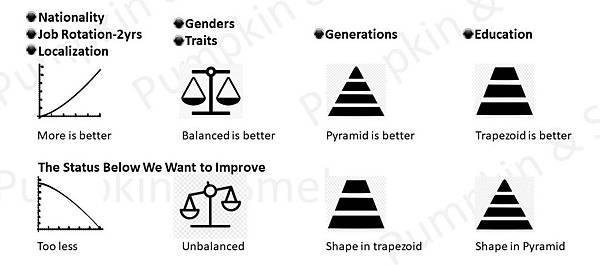
The variables include the nationality, gender, communication trait, education level, and job rotation of the organization members.
The coefficient, that is, the weight, our focus is on job rotation, education, and style. Nationality and gender do not affect the effectiveness so strong in our organization now.
So I build a simple formula to describe those models above:
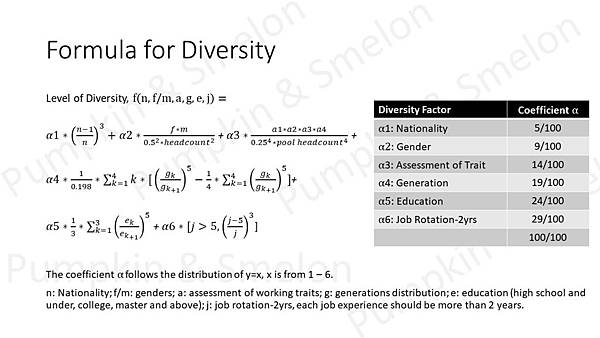
Use excel in making some calculations, we get the numbers below. I got a number between 0-1. The closer it is to 1, the better the degree of diversity. Of course, you can also add other variables, such as language ability, industrial background, etc., each variable is converted into a different model, so be careful to choose a proper one. After long-term observation, you can compare those numbers internally and externally. Obtaining external information may be difficult; however, we can focus something internally with specific items by clear status.
Based on the result in 2019, we took action to change something. One year later, we measure those again:
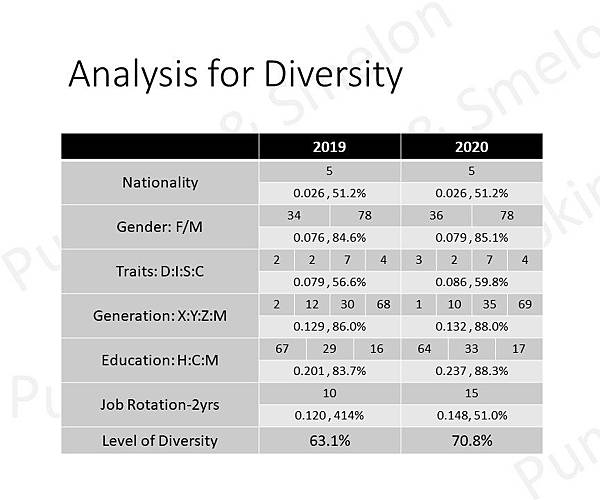
Localization
It is much simpler than diversity.
I look at the ratios of local people at each job level. There are a key question: How many job levels should I choose? In your company, there may be 16 levels. My suggestion is "5-7" levels. Too many levers will lead to many calculating steps; the result is very close to the 5-7 layer. Fewer levels could not highlight the potential issues at different levels, and it is meaningless.
I use 5 layers as an example.
The higher the level of localization, the heavier the weight (coefficient). It is rational if you have local people in your high-level positions, the deeper localization your company has.
When thinking of the model (formula) of localization, I tried to take the normal distribution, linear growing, or exponential growing models; I suggest that the exponential growing models (powered by 1.5) are suitable for it. Of course, companies can choose a more significant coefficient (a more prominent power number, 1.8 or 2?), which means that your company is eager to localize at a high level.
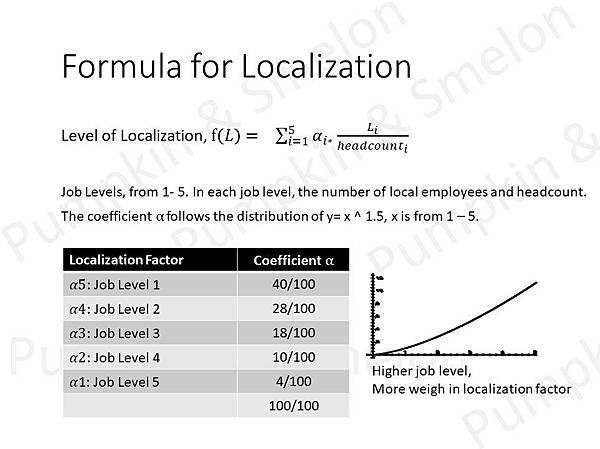
It is also a number between 0-1, the closer it is to 1, the better the degree of localization. You can plan a long-term action to shape the culture of localization.
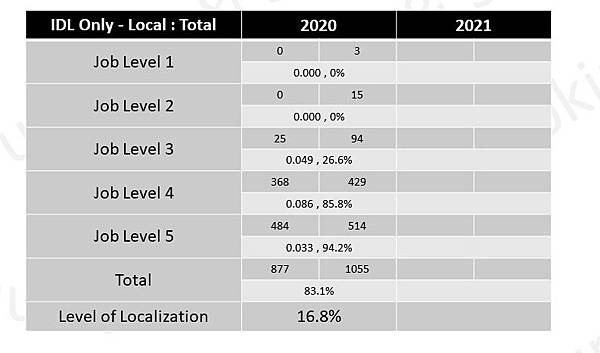
If you have any suggestion or comment, please message me.


 留言列表
留言列表

